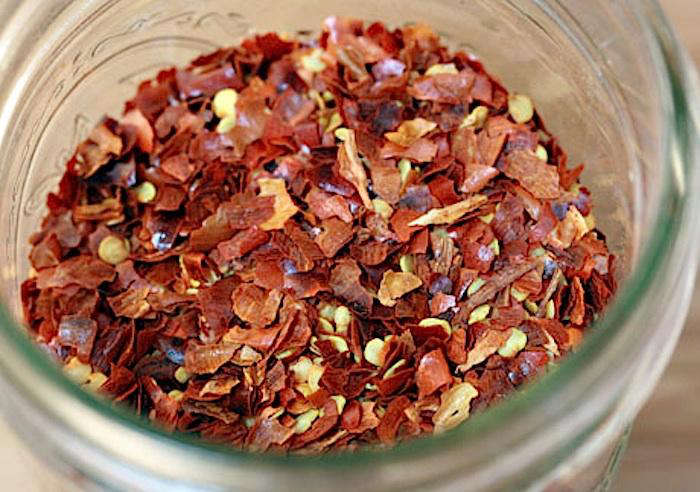Keeping varmints out of your garden is an ongoing challenge. The variety of marauder may vary depending on where your plot is located, but there doesn’t seem to be a garden anywhere that’s immune from four-legged plant eaters, hole diggers, burrowers, or leaf munchers. The challenge is to keep them out without resorting to harmful chemicals, electric shock, or traps. Here are ten humane strategies:
Share your own success stories (or foiled attempts) with us in the comments section below.

•FENCING: Mr. McGregor didn’t do his research. Other than the cat in his garden (more on that later), his rabbit-deterring effort failed at the first line of defense: the fence. Experts agree that the most effective step to protect your garden from rabbits is by blocking access with proper fencing. That means a wire mesh fence that is 2- to 3-feet high (most rabbits cannot jump higher) and that is buried at least 6 inches deep to thwart diggers (recall Peter’s escape). Image via Skippy’s Vegetable Garden.
Above: The Raised Garden Bed Rabbit Fencing is $87.95 for the 4- by 8-foot by 21-inches-high size at Eartheasy. No raised beds? Consider Garden Zone Rabbit Netting that is made of reinforced 20-gauge galvanized wire with extra line wire protection on the bottom half. The 28-inch high, 25-foot long roll is $19.99 at Ace Hardware.
•PUT PLANTS TO WORK: Consider planting the perimeter of your garden with varieties that offer a strong odor and taste (even in the roots) that animals don’t like. These include cayenne pepper plants, garlic plants, and chives. Seeds for Joe’s Long Cayenne Peppers, New Belt Garlic Chives, and Staro Chives are available from $3.45 to $4.95 per packet from Johnny’s Seeds.
•HAIR: Don’t throw away the hair that gathers in your hairbrush. Some gardeners have had success using human, dog, or cat hair spread around or on plants.
•CONSIDER A DOG OR CAT: While our domesticated varieties aren’t the predators they once were, small garden-eating animals don’t know that. Many will stay away for fear of their own fate (however, be warned that urban raccoons will win a cat or dog fight any day of the week).

•ELIMINATE OTHER NON-GARDEN FOOD ENTICEMENTS. This includes garbage, standing water, and even dirty barbecues. Nocturnal nightmares, raccoons are opportunistic feeders; if they don’t find food in your garden, they will look elsewhere. Unfortunately, they are not picky eaters and will eat nearly anything ranging from insects (digging under grass) to vegetables, pet food, and garbage. They can climb over, around and under nearly anything, and are very adept at using their hands to open lids and even turn on hose taps (this is not urban legend; I witnessed this in our San Francisco backyard). Image by Gary Wood via Life in the Foothills.
•OTHER NATURAL REPELLENTS: For all varmints who approach above ground or by tunneling, consider natural repellents placed on or around your plants and garden beds to discourage feeding. Some of the most popular are hot pepper spray, Hot Red Pepper Flakes ($4.25 from Dean & Deluca), or powder that the animals don’t like; granulated urine from fox and other carnivore animals that are natural predators to garden munching animals (some people also swear by sprinkling kitty litter around the perimeter of a garden); and blood meal. Blood Meal is also a great source of nitrogen for plants; $14.26 for a 5 pound box through Amazon. Image via the Perfect Pantry.

•PROTECT THE ROOTS: If burrowing animals, such as gophers, are your problem, consider placing wire mesh under and around the roots of your vegetables and other prized plants, effectively creating cages or baskets underground. Gophers and woodchucks like to attack tasty plants from the roots, eating them from below. And even if they pass over one plant, their tunneling can damage or weaken roots systems. The most effective control is exclusion—keeping them out. Dig a 2- to 3-foot deep hole and line the sides and bottom of the hole with wire mesh such as a roll of Yardgard Galvanized Hardware Cloth is $10.38 at Home Depot. Replace the soil and plant your garden. Image via Sudbury Valley Trustees.
•ELIMINATE GARDEN DEBRIS: Keep your garden free of debris that attracts these burrowing creatures. Remove brush piles, old stumps, and wood piles.

•AND, MORE FENCING: As with rabbits, fencing is the most reliable deterrent to repel deer. Deer tend to appear in suburban or rural yards when their primary food source runs scarce. Deer graze and browse leaves, stems, and buds of many woody plants, as well as alfalfa, roses, corn, vegetables, and fruits. Image via Hammertown.
Above: Heavy Duty Deer Fencing made of heavy weight polypropylene mesh fences that can be attached to posts to create a fence. At the end of the season, you can just roll up the mesh again. UV-stabilized to last for years; $99.95 for the 7-foot heavy duty fence. A lightweight fence is available for $29.95 at Gardener’s Supply.
•LIGHT SHOW: Noise and motion detector lights also are said to work to deter deer and raccoons, but please be mindful of other creatures (I am talking about neighbors) who might also be disturbed.

Above: The Two Light Brushed Nickel Finish Motion Sensor Spotlight is available for $69.99 at Lamps Plus.
For more strategies, consult the National Gardening Association’s Pest Control Library.



















Have a Question or Comment About This Post?
Join the conversation